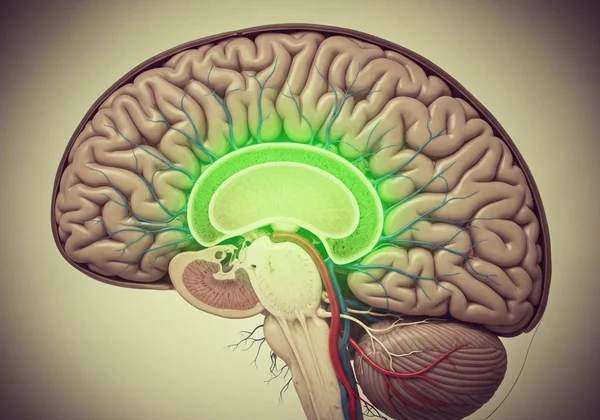Anhedonia Test: A Comprehensive Guide to Symptoms, Causes, and Recovery
Have you ever found yourself experiencing life in muted colors? Perhaps the music you once loved, or time spent with friends, now feels flat, devoid of the joy it once brought. This profound emotional numbness, this inability to experience pleasure, is a central characteristic of anhedonia. If you're asking, "what is anhedonia?" and whether it might describe your own experience, this comprehensive guide is for you. We'll unpack its complexities, from identifying key symptoms to illuminating pathways toward recovery. Taking the first step towards understanding your emotional landscape is powerful. This article offers the clarity you need, and for a personalized starting point, our confidential online anhedonia quiz can provide immediate insights into your unique experience.
What is Anhedonia? Understanding the Loss of Pleasure
Anhedonia is formally defined as the reduced ability to experience pleasure from positive stimuli. It's a key symptom of major depressive disorder but can also appear in other mental health conditions or on its own. It’s not about feeling sad—it's more about feeling an absence of joy and fulfillment where it used to exist.

Defining Anhedonia: More Than Just Feeling Down
It's easy to confuse anhedonia with a bad mood or temporary sadness. However, it is a persistent and pervasive state. While sadness is an active emotion, anhedonia is characterized by emotional numbness. You might intellectually know that an event is happy or a joke is funny, but you don't feel the corresponding emotional response. It’s a disconnect between knowing and feeling, which can be deeply isolating and confusing for those who experience it.
Common Signs and Symptoms of Anhedonia
Recognizing the signs of anhedonia is the first step toward addressing it. Many people wonder, "am I anhedonic?" if they notice a significant shift in their emotional landscape. Common anhedonia symptoms include:
- Loss of interest in hobbies and activities you previously enjoyed.
- Apathy towards relationships and social interactions.
- Reduced interest in physical intimacy.
- A "flat" emotional affect or appearing emotionally unresponsive.
- Difficulty feeling positive emotions like happiness, love, or excitement.
- A tendency to withdraw from social situations.
- Lack of motivation to pursue goals or engage in new experiences.
If these signs resonate with you, gaining a clearer picture of their severity can be empowering. A structured self-assessment, like our free anhedonia test, can provide a valuable baseline for understanding.

Types of Anhedonia: Social vs. Physical
Anhedonia often manifests in two primary forms, which can occur together or separately. Understanding these distinctions helps pinpoint the specific areas of life being affected.
- Social anhedonia is characterized by a diminished interest in social contact and a lack of pleasure from interpersonal situations. This isn't the same as introversion; an introvert may enjoy solitude but can still derive pleasure from close relationships. Someone with social anhedonia feels a distinct lack of reward from social bonding itself.
- Physical anhedonia involves an inability to feel pleasure from physical sensations. This can include anything from the taste of a favorite food and the feeling of a warm bath to the enjoyment of music or physical touch.
Unraveling the Causes of Anhedonia
There is no single trigger for anhedonia. Instead, it often results from a complex interplay of biological, psychological, and environmental factors. Exploring the potential causes of anhedonia can demystify the experience and highlight areas for intervention.
Biological Factors: Brain Chemistry, Genetics, and Neurological Links
At its core, anhedonia is closely linked to the brain's reward system, particularly the neurotransmitter dopamine. Dopamine is crucial for motivation, desire, and pleasure. When this system is dysregulated, the brain struggles to process rewards, leading to a diminished capacity for joy. This dysregulation can be influenced by:
-
Genetics: A family history of depression or other mood disorders can increase vulnerability.
-
Neurological Conditions: Certain conditions like Parkinson's disease or traumatic brain injuries can impact the brain's reward pathways.
-
Inflammation: Chronic inflammation in the body has been linked to changes in brain function that contribute to depressive symptoms, including anhedonia.

Psychological & Environmental Triggers: Stress, Trauma, and Mental Health Conditions
Our minds and environments play a significant role in our emotional well-being. Prolonged exposure to stress or traumatic events can overwhelm the brain's coping mechanisms, leading to emotional shutdown as a form of self-protection. Anhedonia is a hallmark symptom of anhedonia depression and is also frequently associated with:
- Schizophrenia
- Post-Traumatic Stress Disorder (PTSD)
- Anxiety Disorders
- Substance Use Disorders
Lifestyle Influences: Diet, Sleep, and Chronic Stress
The way we live day-to-day can either support or undermine our brain health. Chronic stress, poor sleep quality, and a diet lacking in essential nutrients can all contribute to the neurological and psychological imbalances that foster anhedonia. Recognizing these influences is empowering because they represent tangible areas where positive changes can be made. Evaluating your current state with an anhedonia screening tool can help you and a professional decide where to focus your efforts.
Pathways to Recovery: Treatment & Coping Strategies for Anhedonia
While experiencing anhedonia can feel permanent, it's important to remember that recovery is possible. The journey back to joy often involves a combination of professional guidance and personal effort. The primary goal of treatment for anhedonia is to reactivate the brain's reward circuitry and help individuals re-engage with a fulfilling life.
Professional Treatments: Therapy and Medication Options
Seeking professional help is a sign of strength. A mental health provider can offer evidence-based treatments tailored to your unique situation.
-
Therapy: Cognitive Behavioral Therapy (CBT) and Behavioral Activation (BA) are particularly effective. BA encourages individuals to gradually re-engage in positive and rewarding activities, even if they don't feel motivated initially. Over time, this helps retrain the brain to associate actions with pleasure again.
-
Medication: Antidepressants, particularly those that target dopamine pathways, may be prescribed by a psychiatrist to help correct underlying neurochemical imbalances.

Self-Help Strategies: Re-engaging with Life and Finding Joy
Alongside professional treatment, there are many proactive steps you can take to learn how to fix anhedonia. These strategies focus on gently re-introducing pleasure and meaning into your daily routine.
- Start Small: Don't aim to feel ecstatic overnight. Try re-engaging with a simple, low-effort activity you once enjoyed, like listening to a single song or spending five minutes in the sun.
- Practice Mindfulness: Mindfulness meditation can help you reconnect with the present moment and notice subtle physical and emotional sensations without judgment.
- Schedule Pleasant Activities: Treat rewarding activities like appointments. Put them in your calendar and commit to doing them, regardless of your motivation level. The feeling of pleasure may follow the action, not precede it.
Holistic Approaches: The Role of Lifestyle in Improving Well-being
A holistic approach acknowledges the powerful connection between mind and body. Simple lifestyle adjustments can create a strong foundation for recovery.
- Exercise: Regular physical activity is a potent mood booster and has been shown to improve dopamine function.
- Nutrition: A balanced diet rich in omega-3 fatty acids, vitamins, and minerals supports optimal brain health.
- Sleep: Prioritizing consistent, high-quality sleep is fundamental for emotional regulation.
Understanding where you are right now is the first step. A confidential online screening test can offer valuable perspective as you begin this journey.
Conclusion: Your Journey to Rediscover Joy Starts Here
Anhedonia is a challenging and often bewildering experience, but it is not a life sentence. By understanding its symptoms, exploring its causes, and embracing a multifaceted approach to recovery, you can gradually rediscover the pleasure and joy that make life vibrant. The path forward begins with a single, informed step: self-awareness.
Are you ready to take that first step? Gain immediate, confidential insights into your emotional well-being by taking the free anhedonia test on our homepage. Your journey to rediscovering joy can start today. Visit AnhedoniaTest.com to begin.

Frequently Asked Questions About Anhedonia
How do you test for anhedonia?
Anhedonia is typically assessed by a mental health professional through clinical interviews. However, a great starting point is using a validated screening tool. Our free online anhedonia test is based on the scientifically respected Snaith-Hamilton Pleasure Scale (SHAPS) to help you quickly and confidentially evaluate your own experiences with pleasure and motivation.
What is the root of anhedonia?
The root of anhedonia is complex and multifaceted, involving a combination of factors. Biologically, it's linked to dysfunction in the brain's dopamine-driven reward system. Psychologically, it can be triggered by chronic stress, trauma, or underlying conditions like depression and anxiety.
Does anhedonia ever go away?
Yes, for many people, anhedonia can be improved and even resolved with the right approach. Recovery often involves a combination of therapy, potential medication, and consistent lifestyle changes aimed at reactivating the brain's reward pathways and re-engaging with meaningful activities. It is a process that requires patience and support.
Can people with anhedonia cry?
Yes, they can. Anhedonia is primarily about the inability to feel pleasure, not the absence of all emotion. Someone with anhedonia might still experience negative emotions like sadness, frustration, or grief and be able to cry. However, some also report a general emotional "flatness" that can make even crying difficult.
What supplements are good for anhedonia?
Some research suggests that supplements like Omega-3 fatty acids, Vitamin D, and S-adenosylmethionine (SAMe) may support brain health and mood regulation. However, it is crucial to consult with a healthcare professional before starting any supplement regimen, as they can interact with medications and may not be appropriate for everyone. A self-assessment like an emotional numbness test can provide a good starting point for a conversation with your doctor.